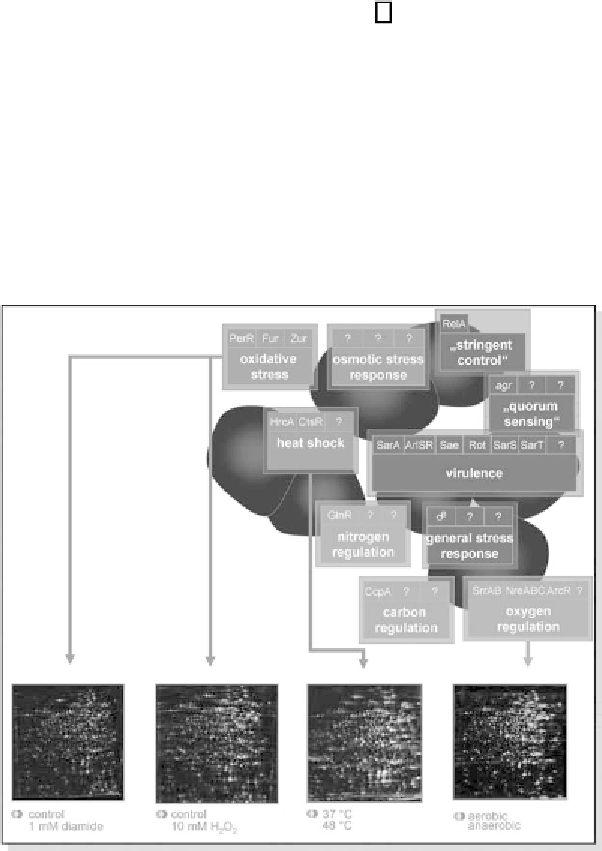Biology Reference
In-Depth Information
was compared with those of exponentially growing cells. All proteins induced by
a single stimulus belong to a stimulon (
see
Fig. 2
and Color Plate 1, following
p. 46). The next step is to dissect the stimulons into their individual regulation
groups, the regulons (
see
Fig. 2
). Comparison of the protein expression profile
of the wild type with mutants lacking specific regulatory proteins under inducing
conditions is currently the best way to define the regulon structure. Furthermore,
the allocation of as yet unknown proteins to stimulons and regulons of already
known function is a simple but convincing approach to an initial prediction of their
function.
The synthesis of proteins under different conditions can be analyzed by incor-
poration of [
35
S]-l-methionine into proteins that were newly synthesized during
Fig. 2. Proteomic signatures of different stress/starvation conditions in
Staphylo-
coccus aureus
. Comparison of the protein synthesis profile of exponentially growing
cells (green) with that of stressed
S. aureus
cells (red) reveals changes in protein
synthesis that are particular for the certain stress stimuli. Cells were cultivated
in synthetic medium and exposed to the respective stimulus at an optical density at
500 nm (OD
500
) of 0.5. Protein synthesis was analyzed by [
35
S]-l-methionine labeling
(5 min pulse) under control conditions and 10 min after imposition to stress. All proteins
induced by one stimulus belong to a stimulon. (
See
Color Plate 1, following p. 46.)



Search WWH ::

Custom Search